Mango farming is pivotal in Australia’s horticulture industry, showcasing various cultivated mango varieties. The primary cultivation regions are nestled in the tropical and subtropical zones, where the climate fosters optimal conditions for robust growth and fruit yield. Along with smaller production zones in Queensland, New South Wales, Northern Territory, and Western Australia emerge as important hubs for mango cultivation.
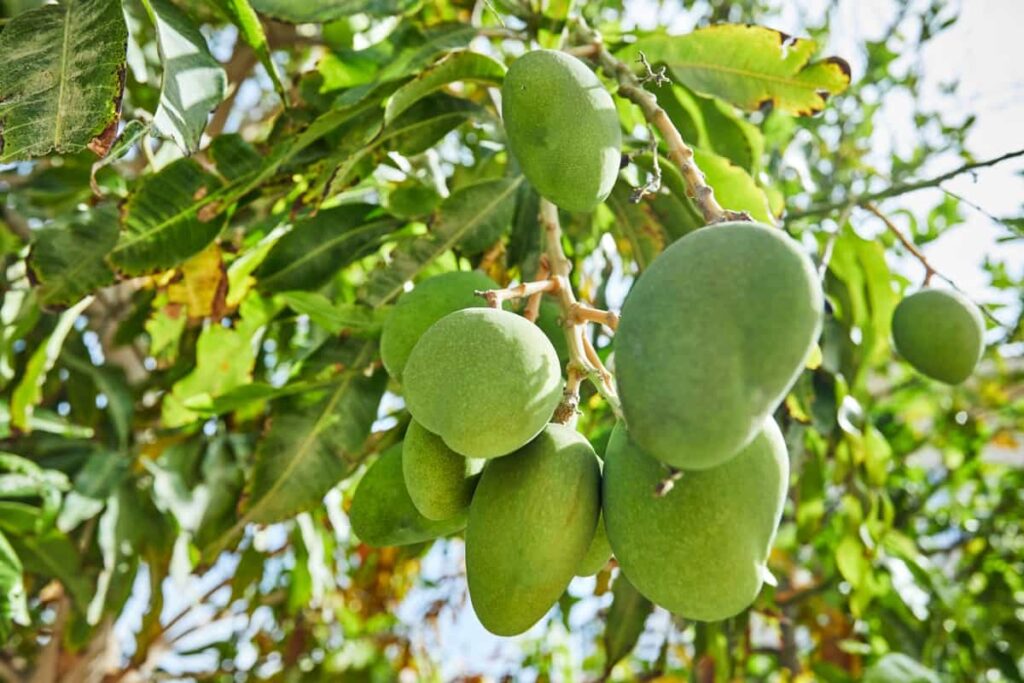
Delving into the intricacies of mango farming in Australia, the cultivation journey unfolds from seed germination to the eventual harvest, constituting a multifaceted process deeply embedded in the nation’s agricultural landscape.
Mango Farming in Australia
Best Climate and Soil Requirements for Mango Farming in Australia
- Climate Suitability: Mango farming in Australia thrives in tropical and subtropical climates characterized by warm temperatures conducive to optimal growth and fruit production.
- Temperature Sensitivity: Mango trees are highly sensitive to frost, and temperatures dipping below 0°C can result in detrimental damage. Therefore, regions with a low risk of frost are ideal for successful mango cultivation.
- Geographical Focus: Key mango growing areas, such as Queensland, the Northern Territory, and Western Australia, benefit from the requisite tropical and subtropical climate, fostering a flourishing mango industry.
- Soil Requirements: Mangoes flourish in well-drained, deep, and fertile soils. The preferred soil pH range for successful cultivation falls between 5.5 and 7.5, ensuring an optimal environment for root development and nutrient absorption.
- Rainfall Adequacy: Adequate rainfall is essential for mango farming, ensuring sufficient moisture levels to support healthy tree growth and fruit development.
- Geographical Expansion: While prominent in the main regions, smaller production areas in New South Wales also contribute to the diverse landscape of Australian mango cultivation.
Mango Varieties Suitable for Australian Climate
Several mango cultivars thrive in the Australian climate. Popular varieties include Kensington Pride (Bowen), Calypso, R2E2, Keitt, Palmer, and Honey Gold. Each cultivar boasts distinctive taste, appearance, and growing needs. Kensington Pride, also known as Bowen, is the most widely cultivated in Australia and is celebrated for its rich flavor and enticing aroma. This diverse array of mango cultivars contributes to the country’s vibrant tapestry of mango farming, offering a range of choices for growers and consumers alike.
Get Your Land Ready for Growing Mangoes in Australia
Preparing your land for mango cultivation in Australia involves strategic steps. Mango trees, typically propagated from grafted plants, are best planted during the rainy season for optimal establishment. Adequate spacing is crucial, ranging between 8 to 12 meters apart, ensuring ample sunlight exposure and proper airflow for healthy growth.
In case you missed it: Australian Beekeeping Startup Guide: Commercial Business Plan, Laws, Rules, Regulations, License, Cost, and Profit
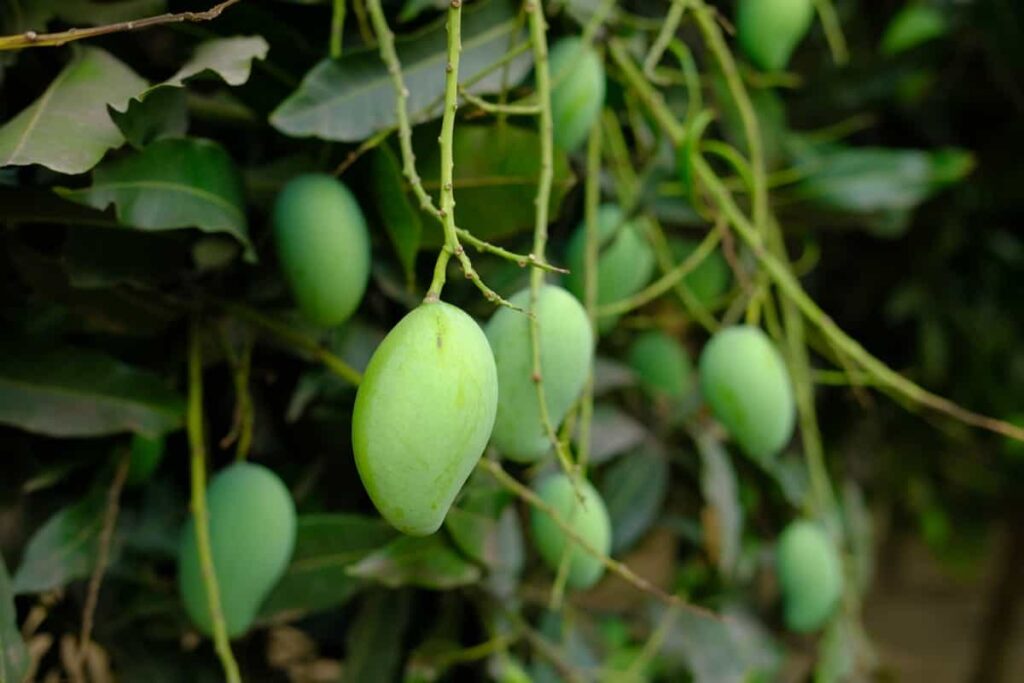
This careful planning during planting and orchard establishment sets the foundation for a successful mango cultivation venture, emphasizing the importance of season-specific planting and mindful tree spacing to maximize the mango orchard’s potential yield and overall health.
Discover Where to Get Good Mango Seeds or Young Mango Plants in Australia
Mango seeds can be obtained by consuming a ripe mango and saving the seed. However, not all mango varieties can be grown from seed. Choose a poly-embryonic variety like Kensington Pride or Nam Doc Mai for true-to-type plants. To grow a mango seed, remove the husk, wrap it in a damp paper towel, and place it in a warm spot until it sprouts.
Once sprouted, plant it in a pot with potting mix, cover the root with soil but leave the shoot exposed, water regularly, and keep it in a sunny spot. Alternatively, buy a grafted mango plant from a nursery for a specific variety and faster fruiting time. Mangoes grow best in tropical and subtropical regions of Australia but can also be grown in warm temperate areas with frost protection. They require full sun, well-drained soil, and regular watering and fertilization.
Figure Out How to Water Your Mango Orchard Effectively
Watering your mango orchard is crucial for its health and yield. Use drip irrigation or micro-sprinklers to deliver water directly to the root zone, avoiding evaporation or runoff. Regularly monitor soil moisture levels; the ideal range is 20-40%. Adjust watering frequency, duration based on weather, soil type, tree age, and fruit development stage.
Young trees need more frequent watering when than mature ones, and fruiting trees need more water. Avoid overwatering or underwatering to prevent stress, reduce fruit quality, increase the risk of fungal diseases and root rot. Mulch your orchard with organic materials like straw, wood chips, or leaves to conserve soil moisture, suppress weeds, and improve soil fertility.
Find Out How to Deal With Pests and Diseases on Australian Mango Farms
- Fruit flies are the serious pest of mangoes, as they lay eggs inside the fruit and cause rotting and spoilage. To prevent fruit fly infestation, you can use baits, traps, nets, or bagging to protect your fruit. You can also harvest your fruit early and dispose of any fallen or damaged fruit.
- Seed weevils are another pest that can damage the fruit by boring into the seed. They can be controlled by spraying with insecticides when the fruit is small or by using resistant varieties.
- Mealybugs, thrips, scales, mites, and whiteflies are some of the pests that can suck the sap from the leaves and fruits, causing wilting, curling, or discoloration. They can also spread diseases such as anthracnose or sooty mold. You can use natural enemies such as ladybirds, lacewings, and parasitic wasps or spray with horticultural oils or soap solutions to control these pests.
- Anthracnose is a common fungal disease that causes black spots on the leaves and fruits, especially during wet weather. It can reduce the fruit quality and shelf life. To prevent anthracnose, you can prune your trees to improve air circulation, avoid overhead irrigation, and apply fungicides before flowering and after fruit set.
- Powdery mildew is fungal disease that causes white patches on the leaves and flowers, reducing the fruit set and size. It can be controlled by spraying with sulfur or potassium bicarbonate or using resistant varieties.
In case you missed it: Raised Bed Gardening in Australia: How to Design for Vegetables, Flowers and Herbs
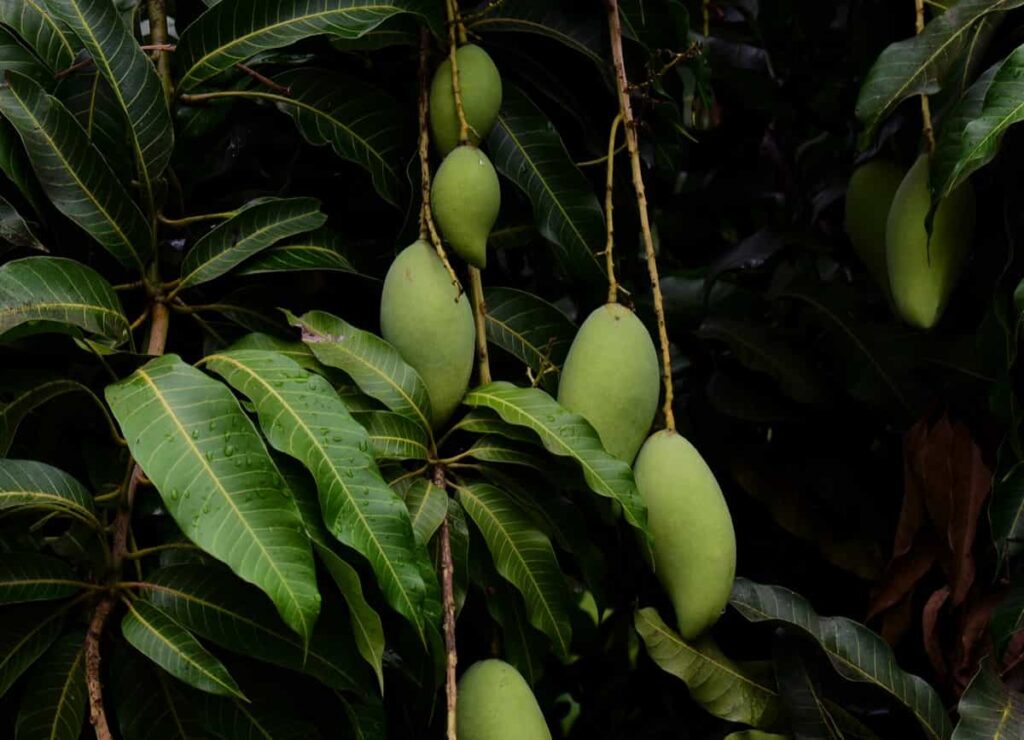
Learn How to Provide the Right Nutrients to Your Mango Trees
In mango orchards in Australia, precise practices in irrigation, fertilization, pest and disease management, pruning, and canopy care are crucial. Drip irrigation proves a common and efficient watering method during establishment and fruit development. Balanced fertilization, tailored to soil tests and tree needs, involves nitrogen, phosphorus, potassium, and micronutrient application.
Vigilant pest and disease management, addressing issues like fruit flies, mango scale, anthracnose, and powdery mildew, employs integrated pest management (IPM) techniques. These encompass biological control agents, cultural practices, and reasonable chemical treatments. Regular pruning is paramount for tree health, involving the removal of dead or diseased branches and optimizing canopy shape to enhance air circulation and sunlight exposure.
Understand How to Trim and Shape Your Mango Trees in Australia
Regular pruning is vital for the health of mango trees in Australia, fostering improved light penetration and facilitating efficient harvesting. This practice includes the removal of dead or diseased branches. Moreover, shaping and thinning the canopy are integral to pruning, promoting enhanced air circulation and sunlight exposure.
By trimming and shaping the trees, growers optimize conditions for robust growth, minimize the risk of diseases, and ensure that the mango orchard receives the requisite sunlight, contributing to healthier and more productive mango cultivation in the Australian landscape.
Get Tips on Picking and Handling Mangoes After They’re Harvested
Mangoes are typically harvested in Australia when they reach physiological maturity while firming, as the fruit ripens post-harvest. Harvesting is commonly executed manually or with specialized tools like fruit pickers with long poles and padded clamps. This method minimizes the risk of fruit damage during the harvesting process. Ensuring optimal timing and employing careful handling techniques contribute to maintaining the quality of harvested mangoes, facilitating a seamless transition from the orchard to the market.
Learn About Marketing Strategies for Mango Farmers in Australia
Efficient post-harvest handling is pivotal for preserving fruit quality and reducing losses in the Australian mango industry. After sorting, washing, and packaging in ventilated boxes, mangoes are stored temperatures between 10 and 13°C to decelerate ripening and prolong shelf life. Marketing strategies encompass diverse channels, such as wholesale, supermarkets, and export markets.
In case you missed it: Exploring the Innovative Techniques of Australian Greenhouse Farming
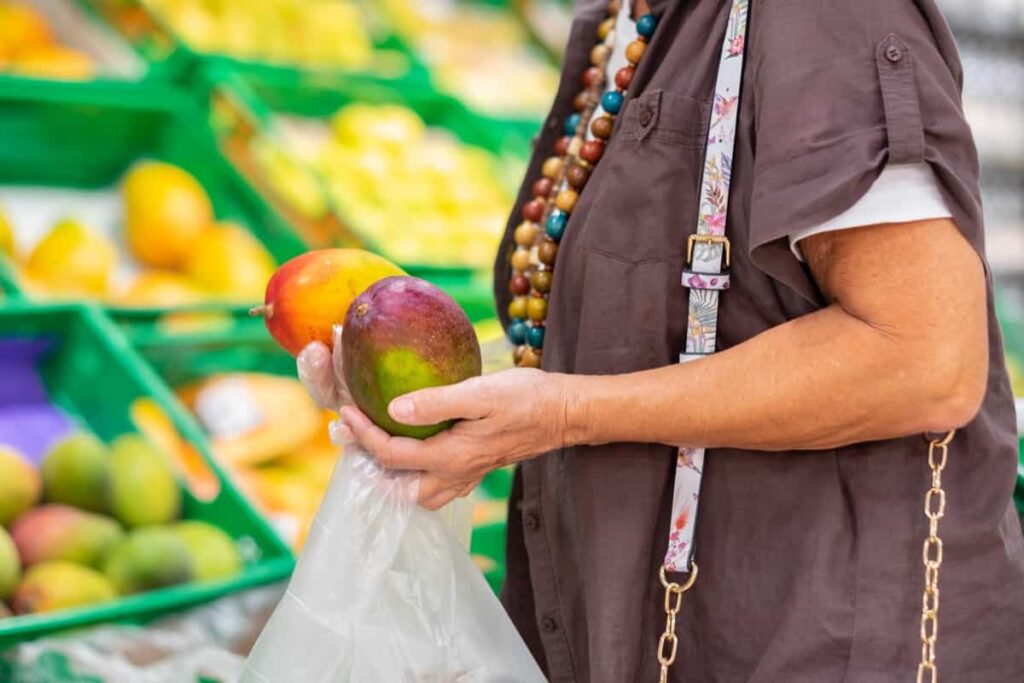
This multifaceted approach ensures widespread accessibility for consumers. It facilitates the integration of Australian mangoes into both domestic and international markets, contributing to a robust and competitive presence in the fruit industry.
Understand the Laws and Rules for Mango Farming in Australia
Mango farming is a profitable and sustainable agribusiness in Australia. Mangoes are grown between 12° and 39° S latitudes in four states, with the peak season from October to January. Suppose you are interested in starting a mango farm in Australia. In that case, You need to comply with the relevant laws and regulations for organic farming, food safety, biosecurity, water use, land clearing, and environmental protection. You must also register your farm with the Australian Mango Industry Association (AMIA) and obtain organic certification from an accredited body.
Explore Sustainable Methods for Growing Mangoes in Australia
Mango farming in Australia can be sustainable by using drip irrigation, rainwater harvesting, integrated pest management, and climate adaptation. These methods save water, prevent soil erosion, avoid harmful pesticides and fertilizers, and adapt to climate change by choosing suitable cultivars, managing the canopy, relocating orchards, or cooling trees. These strategies help balance economic growth and environmental responsibility, making mango farming a popular fruit in Australia.
Find Out How Much Money You Need to Start a Mango Farm in Australia
Capital investment to estimate the costs of land, infrastructure, equipment, irrigation, planting material, labor, certification, and marketing. The initial investment for a mango farm can vary depending on your farm’s size, location, and production system. A rough estimate is that you need at least $10,000 per hectare to establish a mango orchard.
Look Into Opportunities for Exporting Mangoes From Australia
Potential markets for your organic mangoes, both domestically and internationally. Australia exports about 10% of its mango production to countries such as China, Japan, Korea, Singapore, Hong Kong, and New Zealand. You need to meet your target markets’ quality standards, phytosanitary requirements, and consumer preferences. You must also develop a marketing strategy to differentiate your product.
Frequently Asked Questions on Growing Mangoes in Australia
Where Do Mangoes Grow Best In Australia?
Mangoes thrive in tropical and subtropical regions. Key cultivation areas include Queensland, the Northern Territory, and Western Australia. These regions offer the ideal climate for mango growth, fostering optimal conditions for successful cultivation.
In case you missed it: How to Grow Tomatoes in Australia from Seed: Best Time to Plant in Pots, the Backyard at Home for Sydney, Melbourne, and Victoria
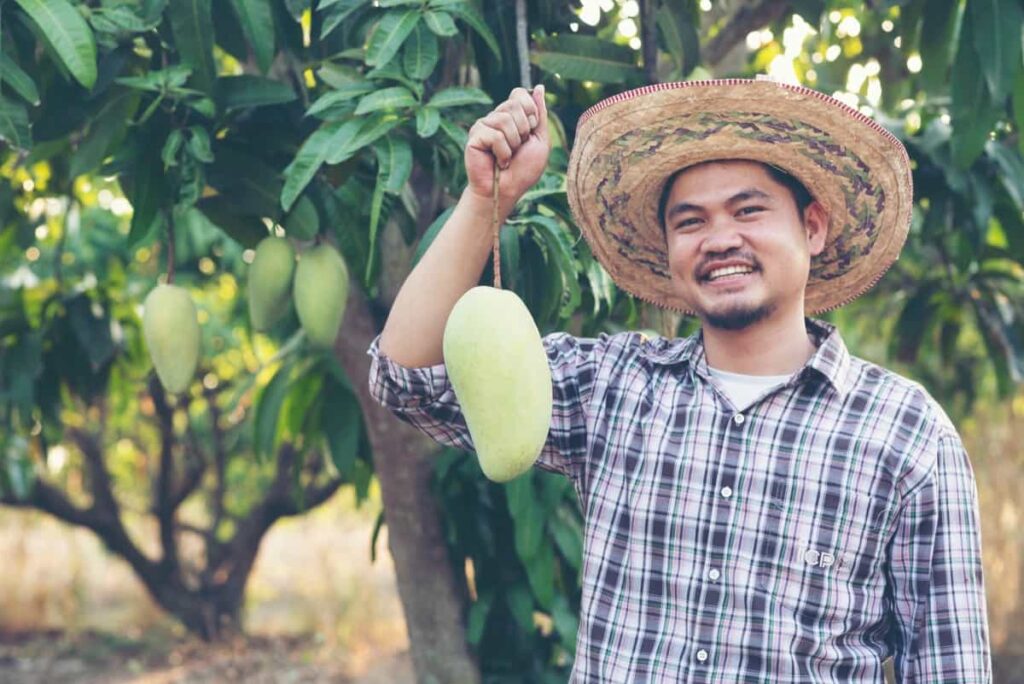
How Big Is The Mango Industry In Australia?
The Australian mango industry is significant, with a thriving production of various cultivars. In recent years, the annual mango production has ranged from 50,000 to 80,000 metric tons, showcasing the industry’s substantial contribution to the country’s horticultural landscape.
What Season Does Mango Grow In Australia?
Mangoes in Australia typically grow during the warm months, with the main harvesting season from October to April. This timeframe aligns with the tropical and subtropical climate, providing the necessary warmth for the development and ripening of mango fruits.
Can Mangoes Grow In Melbourne?
Mangoes face challenges in Melbourne due to its temperate climate, with cooler temperatures. While it’s possible to grow mangoes in Melbourne with careful attention to microclimates and protection from frost, it’s generally more successful in the warmer northern regions of Australia.
Can Mangoes Grow In Sydney?
Sydney’s subtropical climate makes it more favorable for mango cultivation than Melbourne. Mangoes can be cultivated in Sydney with proper care, including selecting suitable cultivars and protecting against potential cold snaps, contributing to local horticultural diversity.
What Types Of Mangoes Grow In Australia?
Australia cultivates a variety of mango cultivars, including Kensington Pride (Bowen), Calypso, R2E2, Keitt, Palmer, and Honey Gold. Kensington Pride is the most widely grown, renowned for its rich flavor. The diverse range of cultivars ensures a spectrum of tastes and appearances, contributing to the vibrancy of Australian mango farming.
In case you missed it: How to Start Hydroponic Farming in Australia: Scope, Types, Pros, and Cons
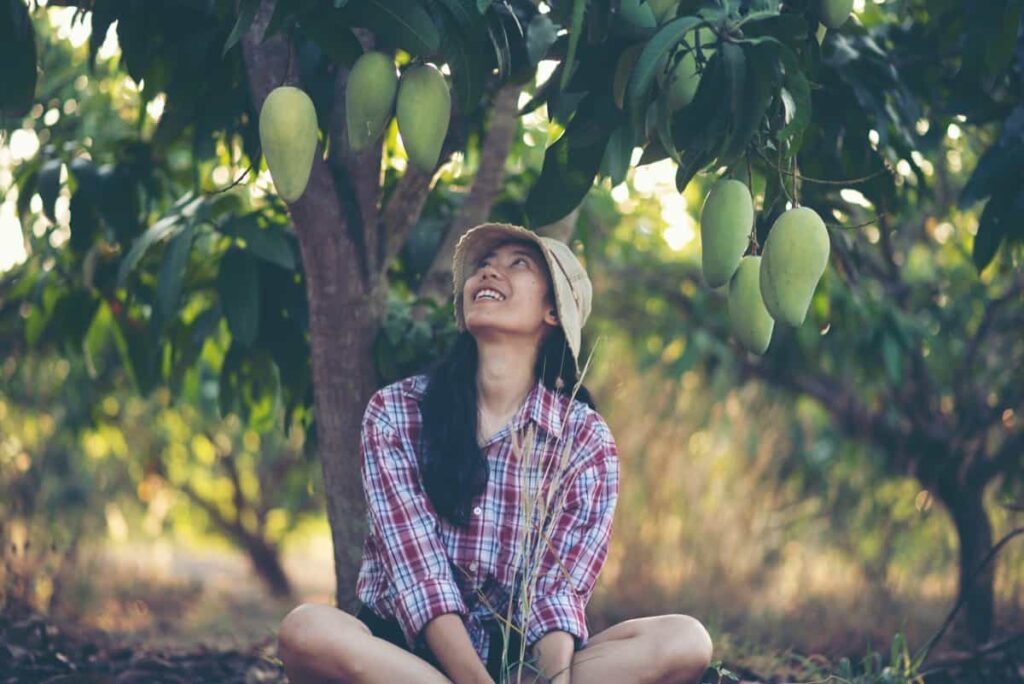
Conclusion
Mango farming in Australia is a dynamic and thriving industry, with diverse cultivars like Kensington Pride, Calypso, and R2E2. From meticulous seed germination to expert harvesting, the nation’s tropical and subtropical climate guides the process. Australian mango growers exemplify agricultural excellence, delivering a spectrum of delicious and unique mango varieties, solidifying the nation’s position in the global mango market.
- Management Pests and Diseases in Your Cotton Field
- Sheep Farming Business Plan for Beginners
- Aquaponic Farming at Home: A Step-By-Step Guide
- Profitable Village Farming Business Ideas in 2024
- High-Yield Aquaculture: Fast-Growing Fish for Farming
- Effective Fish Pond Construction Techniques for Beginners
- Irrigation and Water Management in Pineapple Farming
- Blossom to Harvest: Mastering Flowering and Pollination in Papaya Farming
- Pig Fattening Essentials: From Selection to Sale for Beginners
